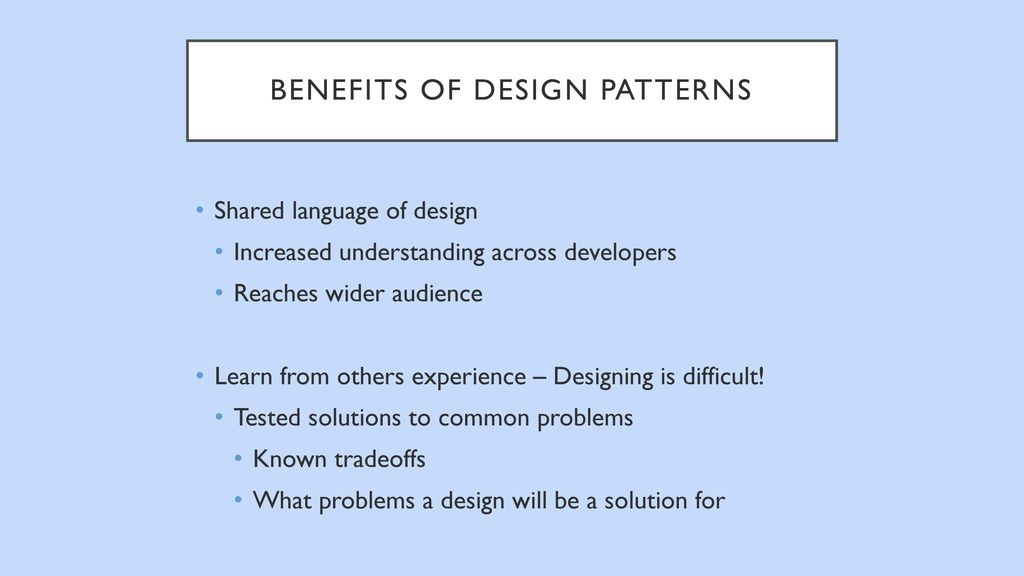Design patterns are essential tools in software development, offering structured solutions to recurring design problems. Understanding and utilizing these patterns not only enhance code quality but also streamline development processes. Here’s a detailed FAQ for the benefits of design patterns.
What are Design Patterns?
Design patterns are reusable solutions to common problems encountered in software design. They encapsulate expert knowledge and best practices, providing a blueprint for solving specific issues in a flexible and efficient manner.
Why are Design Patterns Important?
Design patterns promote cleaner, more maintainable code by offering proven solutions to recurring design problems. They enhance code readability, scalability, and flexibility while fostering better communication among developers.
How do Design Patterns Benefit Software Development?
- Reusability: Design patterns promote reusable solutions, reducing redundancy and improving efficiency.
- Scalability: They facilitate scalable architecture, allowing for easier expansion and modification of software systems.
- Maintainability: Implementing patterns leads to code that’s easier to understand and maintain over time.
- Standardization: Patterns establish common design vocabulary among developers, aiding in collaboration and communication.
- Performance: They can optimize code performance by offering well-tested and efficient solutions.
What Are Some Common Design Patterns?
There are several categories of design patterns, including:
- Creational Patterns: Focus on object creation mechanisms.
- Structural Patterns: Deal with object composition and relationships.
- Behavioral Patterns: Address communication between objects and algorithms.
How Can Design Patterns be Implemented?
Implementing design patterns involves recognizing the problem, selecting the appropriate pattern, and adapting it to the specific context. Understanding the intent and structure of each pattern is crucial for successful implementation.
Where Can I Learn More About Design Patterns?
Resources like books, online courses, and community forums offer in-depth knowledge on various design patterns. Additionally, exploring real-world applications and practicing their implementation reinforces understanding.
Conclusion
In conclusion, leveraging design patterns is integral for crafting robust, scalable, and maintainable software solutions. Incorporating these patterns not only enhances code quality but also fosters a more efficient development process. For ON wave Group, embracing design patterns can lead to streamlined workflows, improved code quality, and ultimately, superior software solutions.
By understanding the benefits of design patterns and actively applying them, developers can unlock the full potential of their software development endeavors, ensuring efficiency and excellence in their projects.


